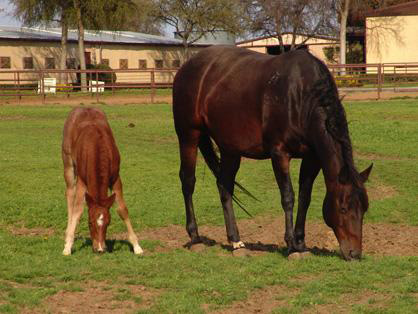Scientists Confident They Have Identified Vaccine for One of Deadliest Equine Viruses
 Scientists at The Pirbright Institute are confident they have identified a safe and effective vaccination strategy for African horse sickness virus (AHSV) – the battle is now to build a business case persuasive enough to encourage a manufacturer to develop it and finally bring it to market.
Scientists at The Pirbright Institute are confident they have identified a safe and effective vaccination strategy for African horse sickness virus (AHSV) – the battle is now to build a business case persuasive enough to encourage a manufacturer to develop it and finally bring it to market.
African horse sickness (AHS), is caused by a virus transmitted by Culicoides biting midges. It is one of the deadliest viruses to affect horses; causing up to 90% mortality in susceptible animal populations and huge economic losses for the equine industry, as well as for owners of working horses. It is prevalent (or endemic) in central and sub-Saharan Africa, but major outbreaks have also been reported in the Middle East, India, Pakistan, Spain, Portugal and Morocco.
Vaccines are available (using the live attenuated virus), in some countries such as South Africa where the virus persists. These are not considered safe enough however for licensed use in countries where the virus is not present, including the EU. This has a major negative impact on the equine industry and sport, due to strict international travel controls to and from endemic countries.
Scientists at The Pirbright Institute led by Dr Javier Castillo-Olivares, a world expert on AHS and a Fellow of the Institute, have developed a modern recombinant vaccine strategy (i.e. one resulting from new combinations of genetic material), for AHS. This vaccine uses modified Vaccinia Ankara virus (which is innocuous to horses), to carry and deliver the gene of AHSV that makes the molecule inducing protection against AHS.
The vaccine has been successfully tested in a mouse model developed by The Pirbright Institute team and also tested in horses. Crucially, this vaccination strategy has the potential to be used as a ‘polyvalent’ approach; meaning that it could be capable of protecting against each of the nine different AHSV virus serotypes. Dr Castillo-Olivares’ team have proven his vaccine model can be used successfully against six of the nine virus strains – and is currently working to develop a complete set of vaccines for all the strains, or serotypes.
Dr Javier Castillo-Olivares said: “AHSV vaccines based on the whole virus particle, when applied systematically to a horse population, make it very difficult to tell if a horse has been vaccinated or has been infected with AHSV. Our approach is not only safe and relatively quick to produce, but crucially enables horses which are vaccinated to be differentiated from those that are infected – something which is vital in an outbreak situation, especially if this outbreak occurs in a non-endemic country.
“Our vaccine model would enable owners and veterinary services in areas where the virus is endemic, to vaccinate horses systematically without compromising disease surveillance. This type of vaccine could also be used in non-endemic countries too, without affecting their AHS freedom status, which would significantly facilitate the movement of their horses locally and internationally,” he said.
To get the vaccine developed and produced in sufficient quantities for global use, scientists urgently need funding. The market for this particular vaccine is perceived to be relatively small, and therefore few manufacturers are currently interested in producing it. Dr Castillo-Olivares presented a very well received paper to the OIE (World Organization for Animal Health), to explain the benefits of this type of vaccination strategy and to ask for their support in lobbying for funding. The OIE now strongly recommends that manufacturers consider these ideas.
In order to provide more scientific evidence to the equine industry and OIE Member Countries, the OIE is funding three research projects on AHS aimed at: a) reviewing updates on the progress made on AHS vaccine research; b) assessment of the socio-economic benefits the application of these vaccines would have; and c) the development of serological tests that could go hand in hand with these new vaccines to differentiate vaccinated from infected horses. The Pirbright Institute is carrying out these research projects under the leadership and coordination of Dr Castillo-Olivares.
Dr Castillo-Olivares said, “We appreciate that manufacturers need to see an economic return on their investment – which in such cases can be substantial. The scientific groundwork has clearly shown the potential of new vaccination strategies as alternatives to classical AHSV vaccines. However, without further funding, it will be impossible to translate this research into a readily available product.
“What remains is for us to demonstrate that such a vaccine would be commercially viable and successful. The deadline for our projects to report is March 2017, and I am hopeful that the evidence we gather will be sufficient to secure the investment desperately needed. This would protect thousands of horses and other equids living in endemic countries, and could enable the safe movement of animals to and from such areas; saving owners of working and sport horses, as well as the wider equine industry, from the economic losses they currently suffer as a result of AHS”.
Further details about the issues of AHS and the impact of Dr Castillo-Olivares’ work is available from the OIE Bulletin (page 72). Information about Dr Castillo-Olivares’ work at The Pirbright Institute can be found here.










